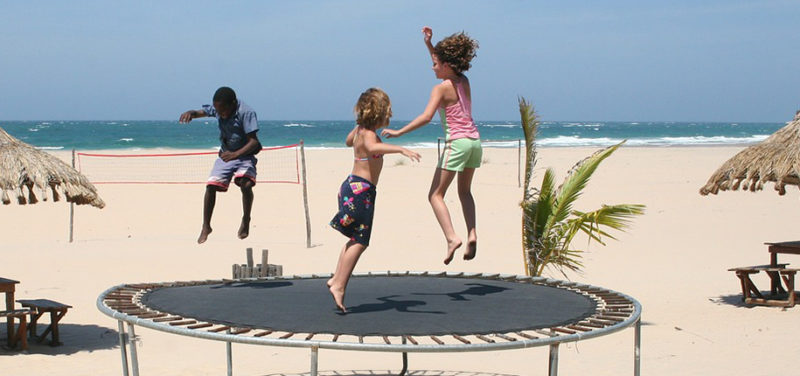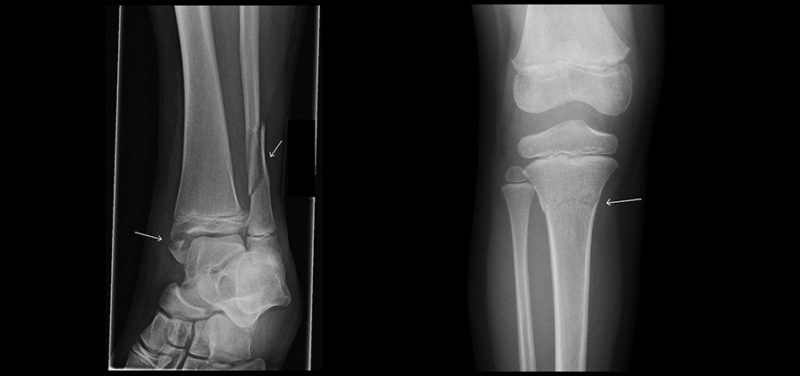
Trampolines are a popular recreational activity among children and teenagers; however, injuries are not uncommon. Young children are at the greatest risk of injury, the most common of which include sprains, strains and contusions. Broken bones and even more serious injuries to the head and spine are possible. Injuries are more often seen when more than one person is using the trampoline at a time. We at Cincinnati Children’s commonly see shin or tibial fractures located just below the knee joint, particularly in 2-5 year olds. This is the result of a heavier person jumping with a smaller child. The smaller child lands on the upward-moving trampoline mat with impaction force on the smaller child lower legs.
 Photo: Broken ankle and fibula from trampoline accident.
Photo: Broken ankle and fibula from trampoline accident.
The American Academy of Pediatrics (AAP) has strongly advised against the recreational use of trampolines since 1999.
The report includes key recommendations for pediatricians and parents, including:
-AAP Advises Against Recreational Trampoline Use
Trampolines are popular and can be a fun recreational activity. However, very serious injuries do occur even when the child is under close supervision despite the use of net and padding.
Contributed by Dr. Christopher G. Anton and edited by Michelle Gramke , (ADV TECH-ULT).
